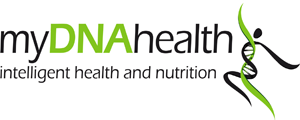What is Vitamin D3
And Why Do We Need It
And Why Do We Need It
Vitamin D3, or cholecalciferol, is a vital nutrient for human health, playing key roles in calcium absorption, bone health, and immune function. Its relevance has grown in recent years due to increasing awareness about deficiencies and their effects on overall well-being. In this article, we will break down the content of information related to vitamin D3 using a six-point structure to help understand its importance, its role in health, and how best to manage vitamin D3 intake.
Vitamin D3 is a fat-soluble vitamin produced in the skin when exposed to ultraviolet B (UVB) rays from sunlight. It is also found in some foods and supplements. The body needs vitamin D3 to maintain proper bone structure and to facilitate the absorption of calcium and phosphorus in the gut. Without sufficient levels of this vitamin, individuals may face a higher risk of developing bone disorders such as osteoporosis or rickets in children, as well as compromised immune health.
While there are two primary forms of vitamin D—D2 (ergocalciferol) and D3 (cholecalciferol)—vitamin D3 is considered the more effective of the two in raising blood levels of vitamin D 3.
Vitamin D3 follows a complex metabolic pathway in the body, beginning with its production in the skin or ingestion via food or supplements. Once vitamin D3 enters the bloodstream, it is converted in the liver to 25-hydroxyvitamin D (25(OH)D), which is the main form of vitamin D circulating in the blood and the one most commonly measured to assess a person’s vitamin D status. Subsequently, 25(OH)D is converted in the kidneys to its active form, 1,25-dihydroxyvitamin D (1,25(OH)2D), which helps regulate calcium and phosphate levels in the blood, promoting bone formation and remodeling 4.
Apart from calcium and phosphate homeostasis, vitamin D3 interacts with the immune system by supporting pathogen-fighting immune cells, including T cells and macrophages, thereby reducing inflammation. It has also been linked to the modulation of glucose metabolism and cardiovascular health, making it essential for more than just bone health.

The benefits of vitamin D3 go far beyond preventing rickets or promoting bone health. Adequate levels of vitamin D3 have been associated with various health outcomes:
Vitamin D3 deficiency is more common than many people realize, especially in regions with limited sunlight exposure or among populations with darker skin tones, as melanin reduces the skin’s ability to produce vitamin D3 from sunlight. Other risk factors for deficiency include age (older adults are at greater risk), obesity, and chronic health conditions that impair fat absorption, such as Crohn’s disease or celiac disease 6.
Symptoms of vitamin D3 deficiency may not be immediately apparent, but over time, individuals may experience:
There are three primary ways to obtain vitamin D3: through sunlight exposure, dietary intake, and supplementation.
To maintain optimal health, individuals are encouraged to monitor their vitamin D3 levels, particularly if they fall into one of the higher-risk categories. Blood tests can measure the level of 25(OH)D in the body, and a level of 20 nanograms per milliliter (ng/mL) or above is generally considered adequate for bone and overall health [6].
Those who are found to be deficient can increase their vitamin D3 intake through:
Additionally, education campaigns can raise awareness about the importance of vitamin D3 for health. Healthcare professionals can play a key role in advising patients on the need for vitamin D testing and supplementation, particularly for those at high risk of deficiency.

Vitamin D3 is essential for maintaining optimal bone health, supporting immune function, and preventing chronic diseases. Yet, deficiency is widespread due to factors like limited sunlight exposure and dietary habits. By understanding how vitamin D3 works in the body, identifying at-risk populations, and promoting solutions like dietary changes, sunlight exposure, and supplementation, individuals can significantly improve their health outcomes. Addressing vitamin D3 deficiency requires a concerted effort from both individuals and healthcare providers, making it a critical area for ongoing health education and awareness.
References
1. ods.od.nih.gov – Vitamin D – Health Professional Fact Sheet
2. nhs.uk – Vitamin D
3. ncbi.nlm.nih.gov – Overview of Vitamin D – Dietary Reference Intakes
4. webmd.com – Vitamin D3 Oral: Uses, Side Effects, Interactions/a>
5. en.wikipedia.org – Cholecalciferol
6. medicalnewstoday.com – Normal Vitamin D Levels by Age

